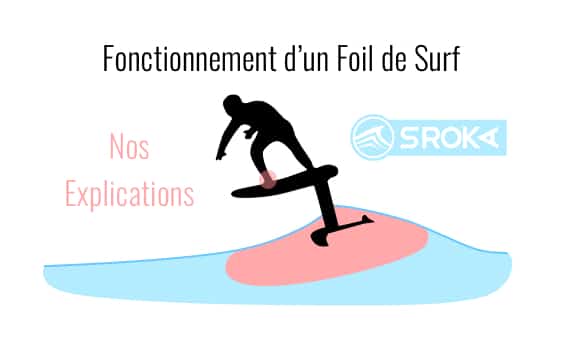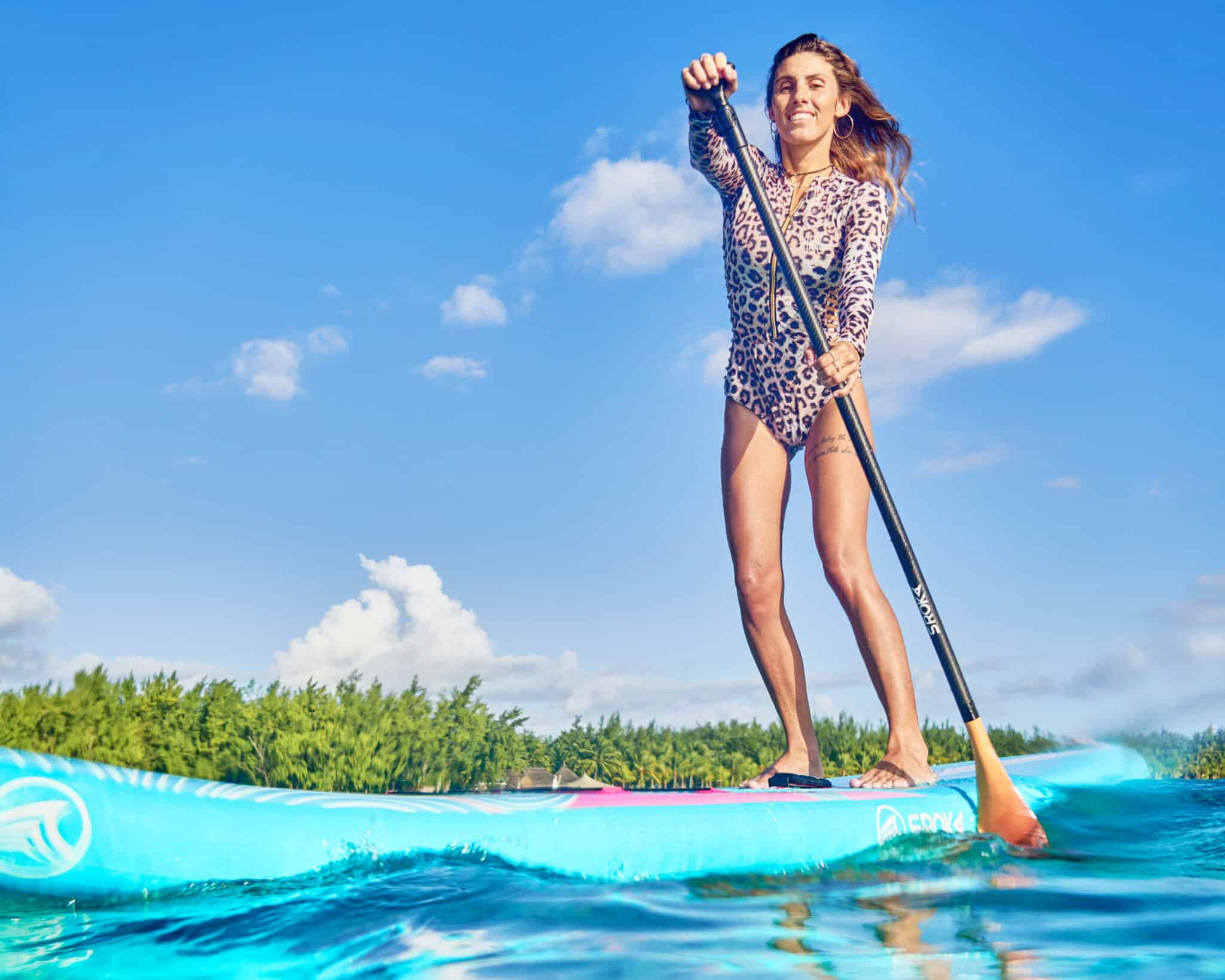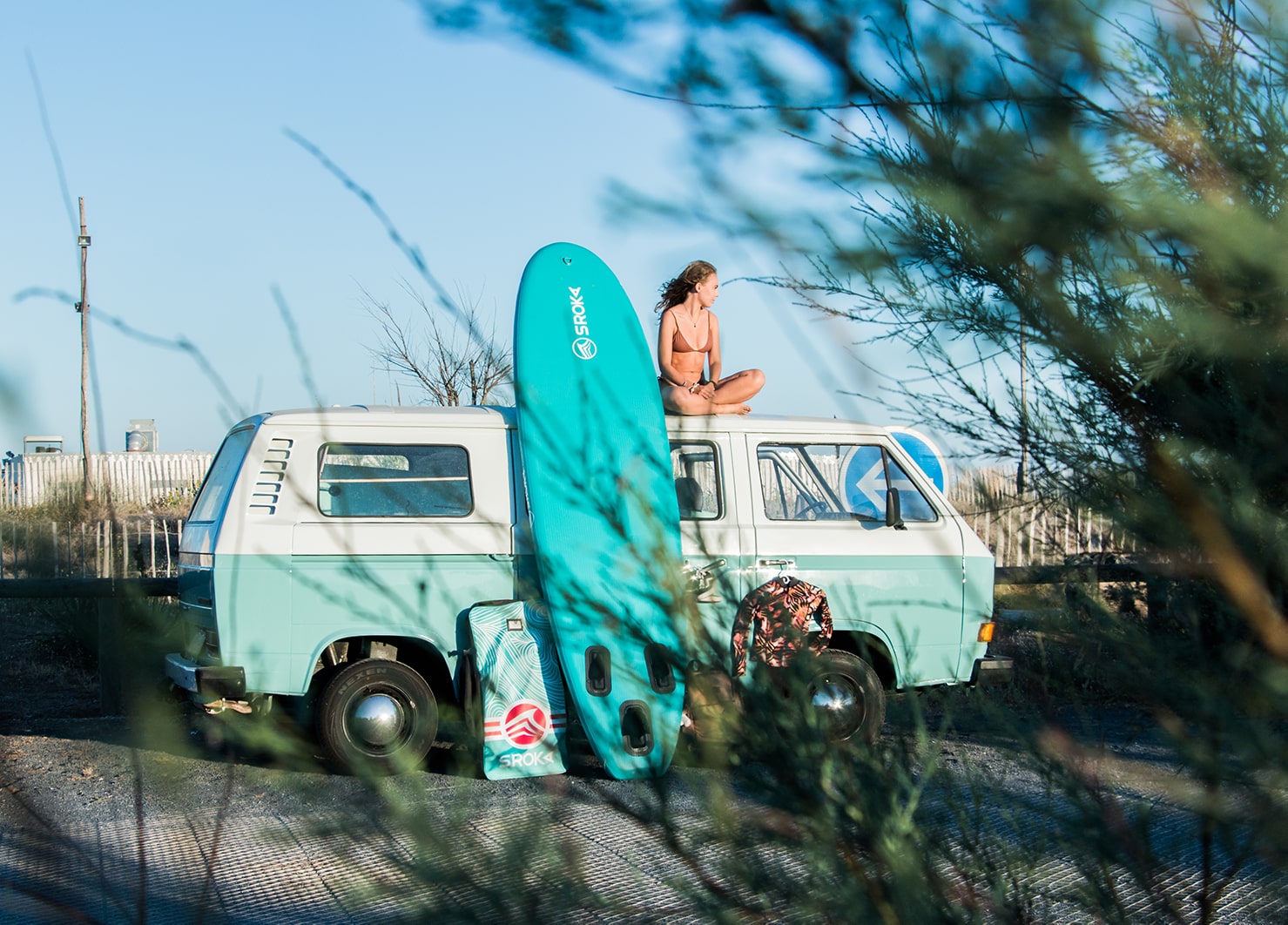Louis-Arnaud surf-foil in Mauritius, equipped with the Fast Flyer 4’6 board and the High Aspect 1190 Lift S-foil Summary Composition of a surf foil Principles …
How to accelerate in wing foiling?
For some time now, the practice of wingfoiling has been opening up to more and more interesting horizons of speed, little by little, the sport is becoming faster and faster and wingfoilers are starting to catch up in terms of speed.
But how do you accelerate in wing foiling ? It is not enough to be passive and wait for it to happen on its own, there are many parameters that come into play and that will help you accelerate.
Speed in wingfoil!
Embark on a cruise to your finest speed records on the water and discover the ultimate pleasure of full speed sailing.
The right technique to accelerate
What pace to go fast?
When sailing, a majority of the boats are faster when they are on the leeward, the wing is no exception to this common specificity, but a small subtlety is felt.
To go as fast as possible, start accelerating across to load the wing and foil, then, shoot down hard to go to the wide beam, the energy accumulated across will catapult you to the full speed and the drop will make you accelerate again.
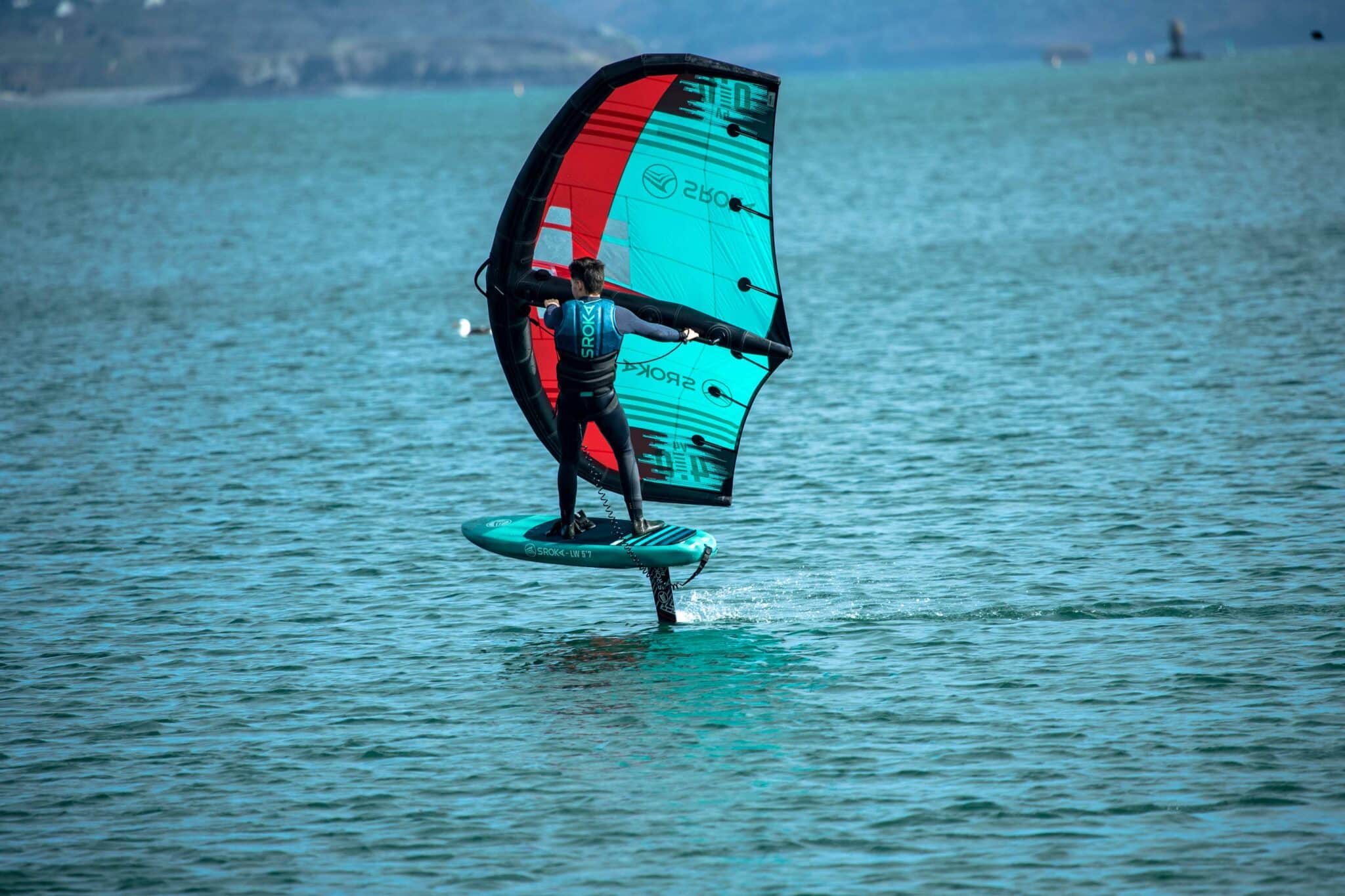
To go glass on a foil, you have to heel, like kitefoils, heeling is a kind of balance between the wing that pulls to one side and the whole foil and the rider who leans to the opposite, this allows you to push in the foil, to pull in the wing and thus to unleash the speed of your whole.
The placement of the wing is also important, the closer it is to the horizontal, the more it pulls forward and therefore will make you accelerate.
For some time now, harness tips have been tending to become more popular and to become essential for freeride, freerace and race. Their use can be confusing at first, but to use them effectively, you will need to find the right position. A kind of balance where you sit like in a windsurfer, without pressing too hard to maintain the speed of the foil without saturating the wing.
The right equipment to accelerate in wingfoiling
Wing foil equipment plays a key role in your wing speed.
The wing challenge proves this every year. To maximize your chances of speeding up, you will have to play on as many boards as possible.
The wing is the first important element, a rigid wing that drags little air will give you better propulsion sensations. There are many innovative materials and concepts.
For its part, the SROKA brand is working on a dyneema breed wing, with the thinnest leading edge on the market to reduce drag.
Wing foil boards are essential in the take-off part, they allow you to keep small foils with little wind. Their aerodynamics are also very important for speed and stability.
Finally, the important element is the foil, it plays a huge role in the speed of your set. Many parameters are then taken into account, such as the surface area of the front fin, the stabilizer, their thickness, their profiles, the thickness of the mast, its rigidity, its chord, etc. To put it simply, a thin, long mast with little rope and rigid will be ideal. Accompany it with a small 500 cm2 type fin, a small BCD and you get a real racing machine.
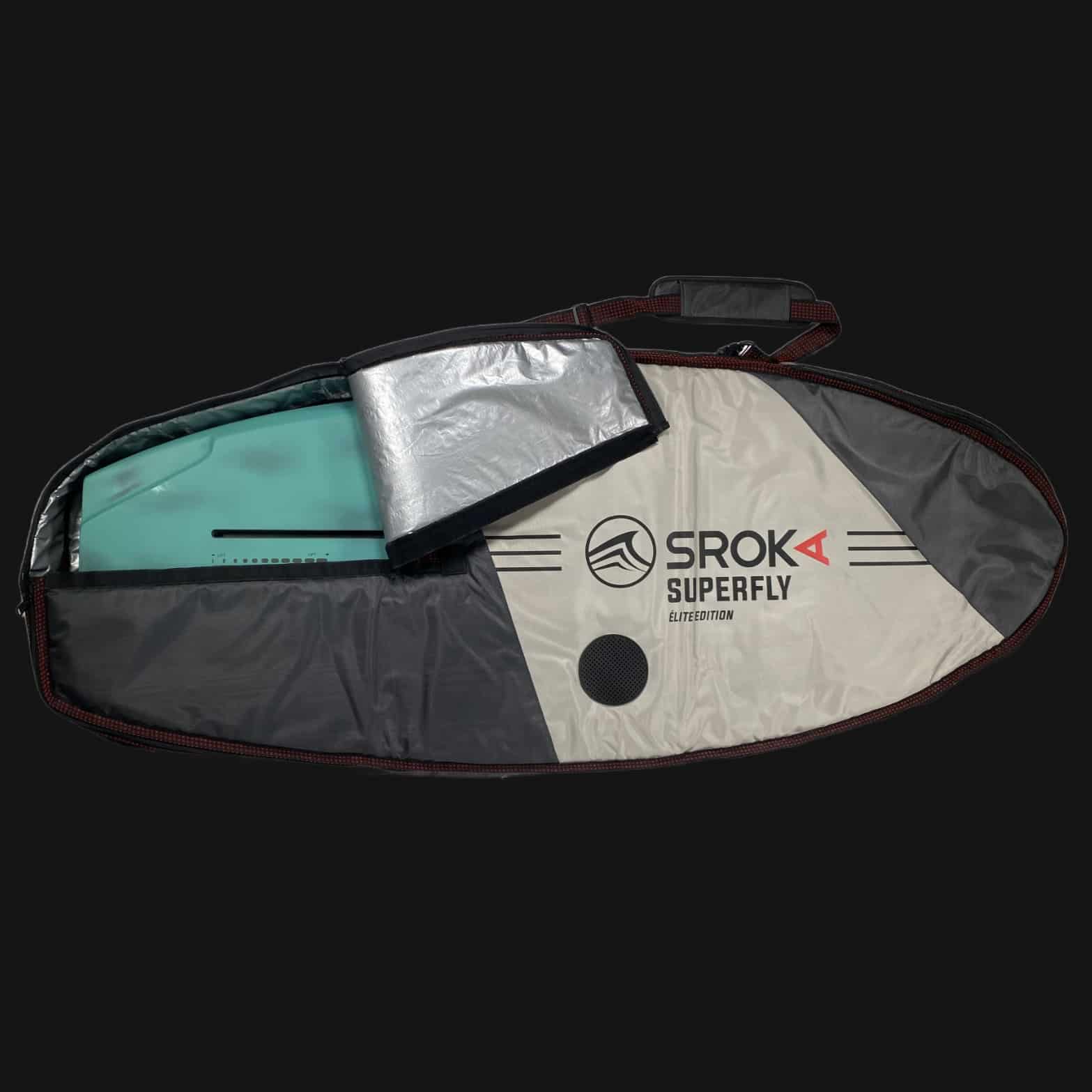
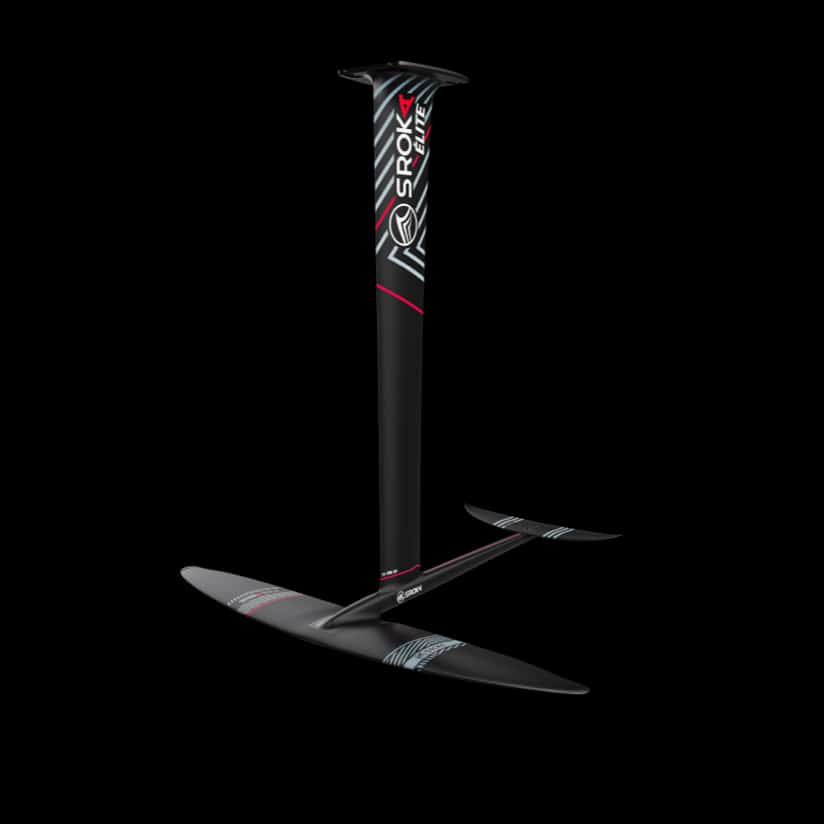
Settings that will make you speed up
Adjustments are an important part of the performance of wing equipment, although they are less complicated than those present in windsurfing, they are nevertheless extremely important.
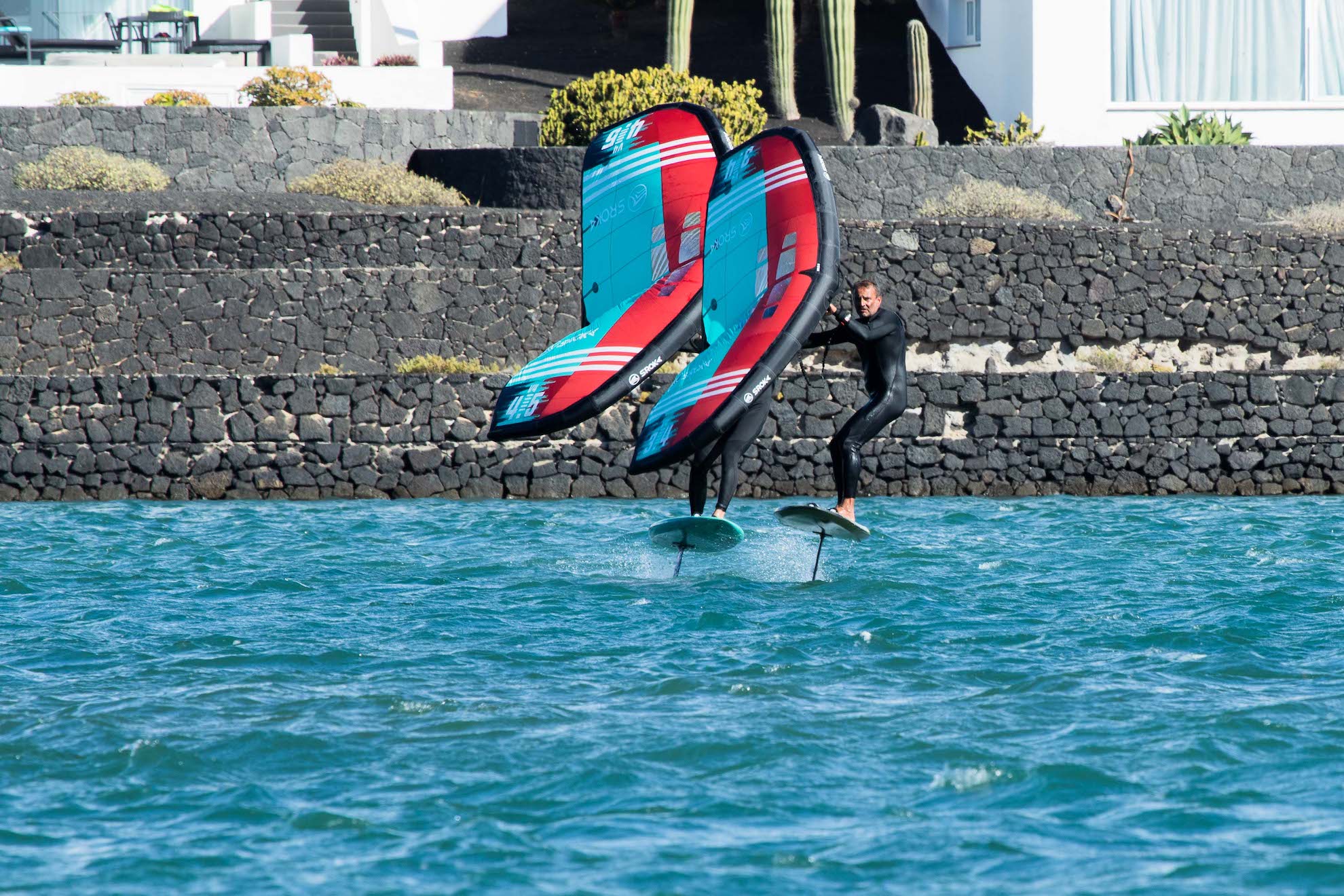
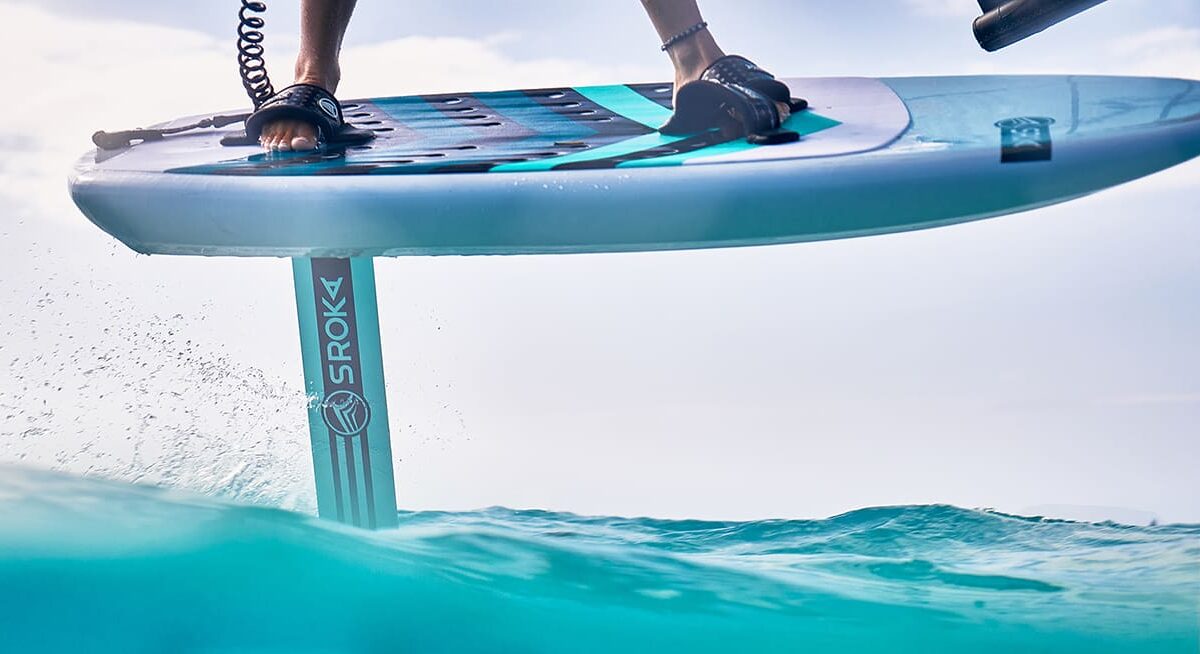
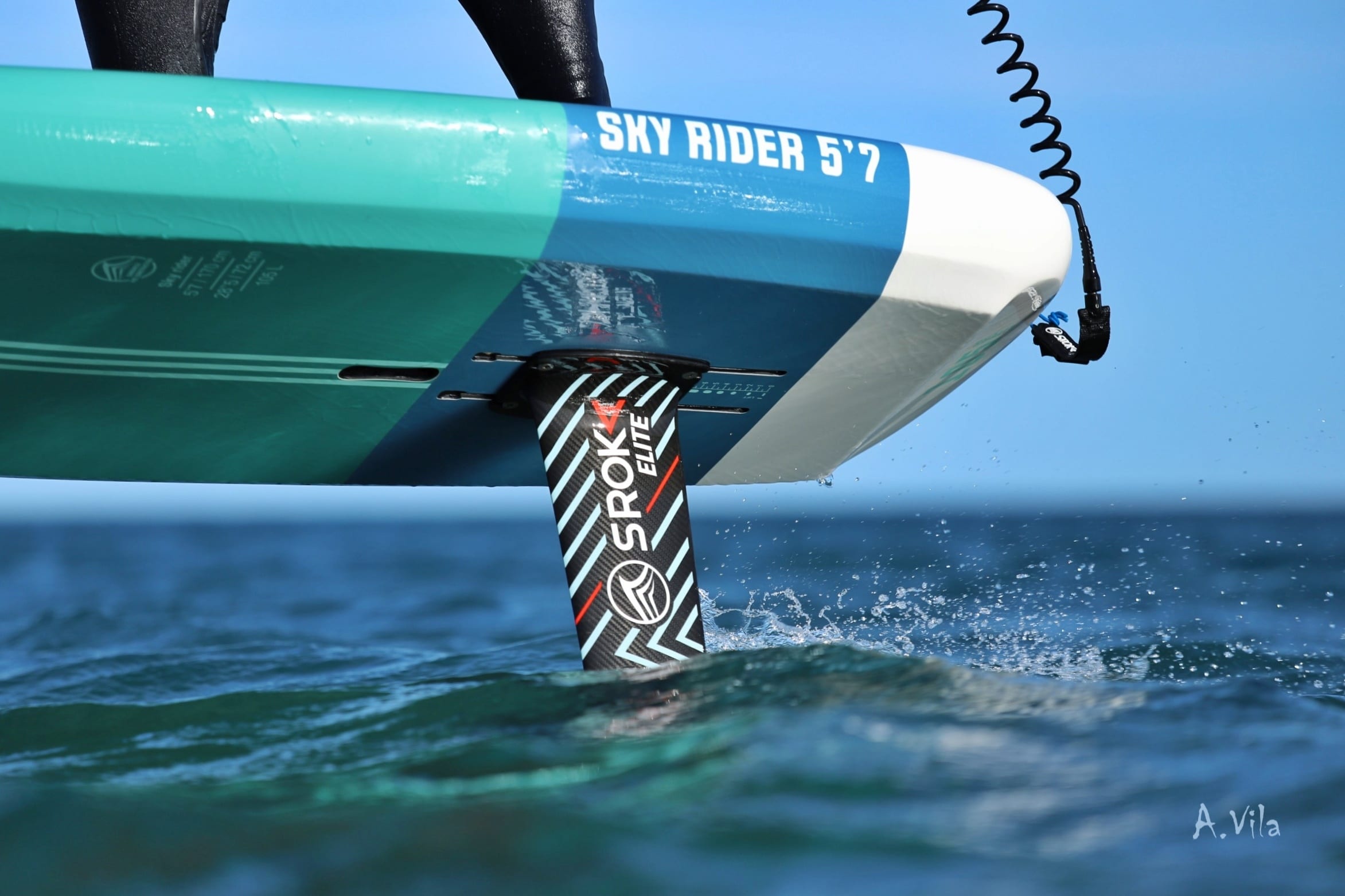
Wing settings
To begin with, the wing does not have a full-fledged adjustment, you will just make sure to have a properly inflated rigid wing. You can possibly lower the pressure slightly when the wind is very strong.
The important adjustment is that of the harness ends, their balanced placement allows a significant comfort of use for performance.
Setting your board
The board adjustments are essential, the goal is once again to be comfortable, so adjust your straps in a way that avoids injuries, holds the board firmly without cramping underfoot. As for their positions, we’ll get to that in a moment.
Adjusting your foil
Now let’s talk about the foil settings, these are absolutely essential if you want to perform.
The stabilizer adjustment is a fine and precise adjustment. It affects your feeling on the foil, the slightest degree can play and make you feel the foil in a different way. Depending on the location of the latter on the fuselage, the following advice will be reversed. In the case of Sroka, our stabs are attached from the top of the fuselage. A positive shim lifts the back of the stabilizer and therefore gives more lift, conversely a negative shim raises the front of the stab and therefore reduces the lift.
The placement in the case is also important, moving your foil back reduces the support under the front foot and vice versa.
What settings to go fast?
When the foil accelerates, the lift under the front foot will increase, to counter this effect, we then move the foil back into the case, this gives a more “back foot” foil at low speed but very balanced at high speed.
But depending on the profiles, sizes and preferences of each person, the very far back foil can sometimes be an unpleasant experience, which is why we adjust the stab.
This adjustment allows the foil to be moved as far back as possible, which increases the distance between the BCD and the rider’s front foot and thus provides stability and control, by giving a positive angle to the stabilizer, we find comfort.
The position of the straps also plays a role in this precise balance, moving the back foot increases comfort at low speed and the rebound at the end of the maneuver and the advanced front strap allows you to press harder on the foil when it accelerates as well as to further lengthen the distance between the stab and the front foot.
A speed addict could then back everything up, increase his stance (distance between the feet) and set the BCD at 0° so that it slides as much as possible.
The psychological aspect of wingfoiling
The speed on a foil is very frightening during the first few attempts, although some acclimatization will make the exercise easier over time, it will always be a little scary to speed at 30 knots in the swell, the chop and between the competitors in a regatta.
We then enter a game where the technique no longer advances without an important part of psychology in order to manage our fear. Some call it putting the brain down, but it’s important to stay focused to avoid falling. Rather, it’s about controlling your emotions and your ability to put fear aside.
Conclusion
Wingfoiling is a sport in full evolution, with increasingly impressive performance in terms of speed. To achieve these high speeds, several elements come into play:
-
Navigation technique is essential, in particular by seeking to maximise the lift effect of the foil and wing. Adopting the right “counter-heel” position is essential.
-
The choice of equipment is crucial, from the rigid and aerodynamic wing, to the thin and slippery board, to the foil, optimized for performance (shape, size, rigidity, etc.).
-
The adjustments, although simpler than in windsurfing, play a decisive role, especially for the positioning of the foil and the harness ends.
-
Finally, the psychological aspect should not be neglected. The speed reached can be impressive and requires overcoming your fear to be able to fully exploit the potential of the equipment.
By mastering these different aspects, you will be able to push the limits of speed even further in this growing sport.
If you still have questions about this, or for any other request, please do not hesitate to contact us !
Article you may be interested in
Did you know that paddle boarding is a great way to strengthen your body? Not only does this activity allow you to escape on the …
Are you looking for an inflatable paddle board for the summer to sail at sea or in lakes? The inflatable paddle board really has a …
What is Wing Foil? Wing Foil is the latest in board sports. This consists of manipulating a wing held with both hands (“wing”) with a …

